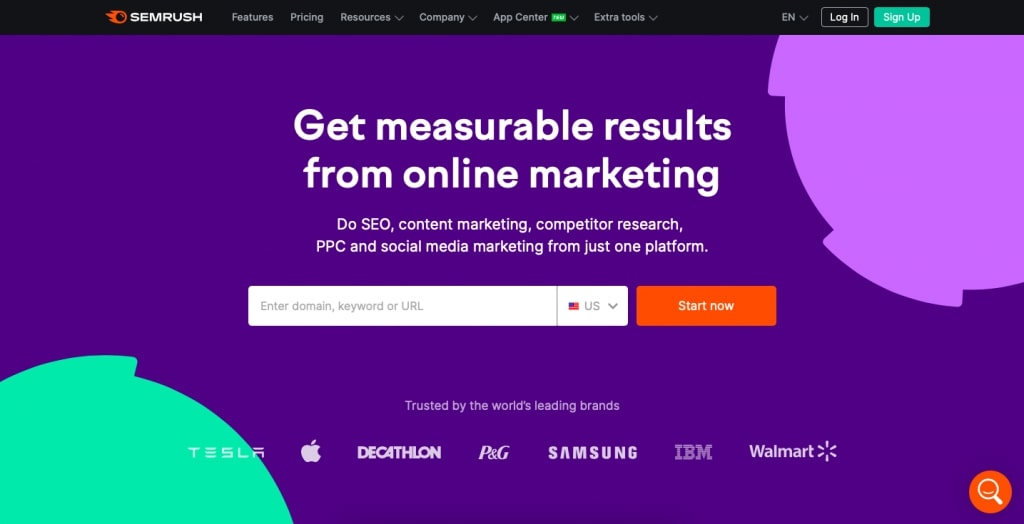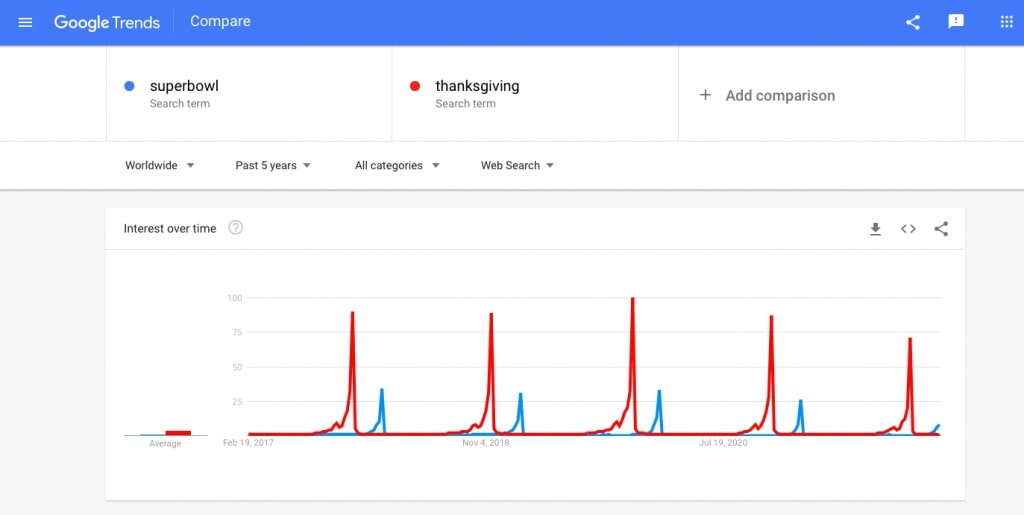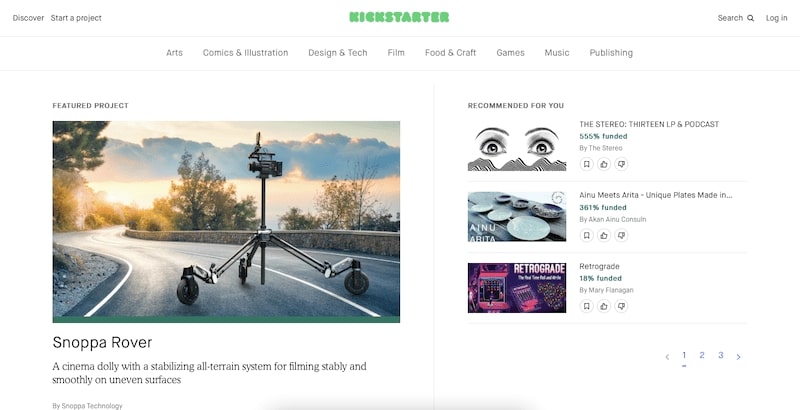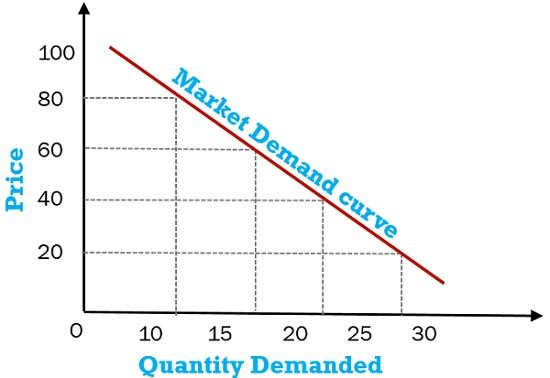Did you know that 35% of the time startups fail because there is no market need? Whether founders failed to do proper research or had misperceptions about their market, the fact remains the same.
Most founders see a gap in the market, a problem they can solve, then find a solution for it. They turn this solution into a marketable product, aiming to make people’s lives easier.
Sounds good, right? So why doesn’t this always work?
The reality is that statistically only 1 out of 3 startups will succeed. It takes a special combination of luck, pricing model, market demand, and branding to make amazing products skyrocket.
Actually, the real eureka moment happens when you find a product-market fit. But how to determine market demand for a product? And what is market demand anyway?
If you want to learn how to determine market demand for a product and discover more about market demand testing and market demand calculation, you’re in the right place. Read on to explore the many ways of determining the demand for your product.
What is Market Demand?
Market demand is the total amount of a good or service that consumers are willing and able to buy at a specific price, considering factors like their preferences and spending power. It reflects the collective desire of a market for something and how much they’re willing to pay for it.
But let’s make one distinction – there are people who want a product, people who can afford it, and people who are willing to pay for it. If a person can’t afford or isn’t willing to pay for your product, their desire isn’t included in the total market demand for a product.
Understanding market demand is crucial for pricing your product, marketing it, and, most importantly, deciding whether to build it in the first place.
Now that you know what market demand is, let’s look at the benefits.
Why is Market Demand Analysis Important?
Market demand analysis is a critical function for businesses of all sizes. It’s like taking a deep dive into the desires and needs of your target market and understanding the bigger picture of what’s going on around you. Here’s why it’s so important:
Informs Smart Decisions
Imagine launching a new product without knowing if anyone actually wants it. Demand analysis helps you identify gaps in the market and opportunities for new products or services. For instance, a company analyzing the plant-based food market might uncover a lack of convenient snack options, prompting them to develop a new line of vegan protein bars.
Optimizes Production & Inventory
By understanding the level of demand, businesses can avoid overproducing or under-stocking. Let’s say a clothing retailer sees a surge in demand for athleisure wear. Through demand analysis, they can predict how much to stock and avoid ending up with a mountain of unsold formal wear.
Sharpens Pricing Strategies
Understanding how much people are willing to pay for something is crucial for setting the right price. Demand analysis can help identify price elasticity, which is how sensitive demand is to price changes. For example, a high-demand product with low elasticity might allow for a premium price, while a product with a highly elastic demand might require a more competitive price point.
Identifies Emerging Trends
The market is constantly evolving. Demand analysis helps businesses stay ahead of the curve by identifying trends and shifts in consumer preferences. For example, a company analyzing the home fitness market might see a rise in demand for virtual workout programs, prompting them to invest in developing their own online fitness platform.
Boosts Marketing Effectiveness
Knowing your target market inside-out allows you to tailor your marketing messages for maximum impact. Demand analysis can reveal demographics, buying habits, and pain points of your ideal customer. This allows you to target them with the right message on the right channels, maximizing your marketing spend.
In essence, market demand analysis is like having a crystal ball for your business. It provides crucial insights that empower you to make informed decisions, optimize operations, and stay ahead of the competition.
How to Find Market Demand
Now that you know a little more about market demand for a product and why you need it, let’s get to the good part: How to determine market demand for a product. With so many different ways you can find market demand, we decided to show you the easiest options.
The Harvard Business Review defines 4 steps you can take when it comes to “how to find market demand.”
- Defining the total market, conversion of all possible end-users,
- Segmenting the total market into smaller components to analyze,
- Understanding and forecasting the drivers behind demand,
- Running Sensitivity Analyses to determine the accuracy of research.
All of this, of course, is easier said than done. Below are 6 bite-sized approaches to determining market demand for a product.
1. Defining Market and Niche
First things first, narrow your product down to a market. Is your product for home improvement or entertainment? Beauty or foods & beverages?
Once you have a general market defined, it’ll be time to narrow it down to specific and intentional niches. If you are selling clothing, are you selling luxury shoes or sports jackets?
Finding your ideal niche or niches can be a gamechanger. This way, you’ll be able to gauge exactly how many potential buyers you have.
2. Using SEO tools
Next up, you can use Search Engine Optimization (SEO) tools like Semrush or Ahrefs to determine search volumes for specific keywords. You can narrow your search based on the location, see global volumes, related topics, as well as intentions behind the search.
You can see who is ranking first for specific keywords, which is a fantastic way of finding potential competitors for your product.

The next time you think, “how do you find market demand,” remember that SEO tools can clear things up. Ultimately, you get to see how many individuals are searching for a potential product you want to create.
SEO tools can also help you find gaps in the market, understand what problems users may have, and more.
3. Practice Social Listening
Social media is a goldmine of customer insights. By actively listening to online conversations, you can gain a deeper understanding of what people are saying about your industry, your competitors, and your brand (if it exists). This can help you identify unmet needs, emerging trends, and potential product opportunities.
Here’s how you can use social listening tools to find market demand:
- Identify keywords and hashtags: Brainstorm relevant keywords and hashtags related to your industry, target audience, and potential products.
- Choose a social listening tool: There are several social listening tools available, such as Brand24, Mentionlytics, Sprout Social, and Hootsuite. These tools allow you to track mentions of your chosen keywords and hashtags across various social media platforms, websites, and forums. Another tool that can be the silver bullet in your marketing strategy is the Prelaunch AI Market Research Assistant. The tool allows you to analyze thousands of reviews and feedback to uncover the top customer praises and complaints from customers on Amazon competitor products.
- Monitor brand sentiment: Track how people feel about your brand or potential products. Are they excited, frustrated, or indifferent? This can help you identify areas for improvement or validate your product ideas.
- Discover customer pain points: Listen for common complaints, frustrations, and unmet needs expressed by potential customers. This can give you valuable insights into what problems your product or service could solve.
- Identify emerging trends: Social listening tools can help you identify trends within your industry or target market. This can give you a competitive edge by allowing you to anticipate future customer needs.
One thing is for sure – when understanding how to find market demand, the power of social media shouldn’t be ignored.
4. Crafting Surveys and Conducting Observations
Next up, here’s the old but gold way of how to determine market demand for a product – through surveys and observations. Depending on your product, you can conduct mass surveys, conduct taste tests, hold individual customer interviews, and more.
Surveys are still one of the most sure-fire ways to get direct feedback from potential customers. This is why we use embedded surveys on Prelaunch.com. The Reservation Survey and Cancellation Survey are part of the concept validation platform’s customer journey and help collect customer feedback after reservations and cancellations. This helps you improve the product and understand customer preferences.
5. Decide and Evaluate the Competitors
Once you’ve used the methods we mentioned above and determined your competitors, track their stats. Oftentimes, you can gauge market demand for a product by gauging the demand for a competitor’s product, especially in a niche market.
This is where market shares come in. For example, Google holds a 92.47% market share among search engines. If you find out the numeric value of Google’s unique users, you can extrapolate the data and understand the total market demand. Plus, you can forecast your own market shares, which will help you determine future profits or a potential user base.
Remember that you are never alone. Whether directly or indirectly, you always have product competition.
6. Using Graphs: How to Find the Market Demand Curve
Speaking in more economic terms, market demand for a product can be quantified and depicted as a graph (otherwise known as a market demand schedule) that looks something like this:

As you can see, the demand slope is curved down, so when the price goes down, demand goes up, and vice versa (this is true for all normal goods/products).
The graph essentially shows how sensitive price changes are to the total quantity demanded. Once you find the secret formula, you can even use it for gauging demand for other similar products.
If you want to know how to find the market demand curve on a graph, simply choose a price point, note where it meets the demand curve, and draw a horizontal line down to the quantity demanded line.
Ways of Testing Product’s Market Demand
Now that you’ve arrived at what you think is your product’s market demand, it’s time to test it. In the olden days, this might’ve been impossible, but with powerful digital tools like Prelaunch, you can test almost anything you need.
Today’s digital tools allow you to not only test market demand but to actually gather proof and validate your idea. This can later be helpful in raising capital from investors.
So, how can you test if a product will sell? There are infinite answers to the question, but to keep it brief we’ll list just a few. Here are 5 waysto determine and test market demand for a product.
Research the Market for Trends Related to Your Product
Testing demand in a market is no easy task. First, we recommend taking a look at the market trends related to your product. Is it going up? Is the demand seasonal? What are the forecasts? Various market research tools can come in handy when you’re doing your research.
Understanding the market trends related to your product is a crucial aspect of gauging its potential demand. On the surface level, you need to know whether the interest for your product is on the rise, falling, or remains steady. Is the demand for your product seasonal? Is its popularity likely to grow in the future? These are complex questions, but various market research tools can provide the necessary data to draw meaningful conclusions.
Google Trends is a powerful tool that can help you visualize the fluctuating demand for your product. This tool indicates trends by showing a pattern of interest over time for a specific search term, such as your product name or related keywords. Google Trends can illustrate whether the interest is rising, falling, staying steady, or following irregular patterns.
For instance, if you search the terms “Superbowl” and “Thanksgiving” over the past five years, you’ll clearly notice recurring seasonal patterns, with the interest for the “Superbowl” term even showing a decreasing trend. To leverage Google Trends, search terms and keywords related to your product or its market niche. You can also refine your query by location, categories, time range, and search type to get more accurate trend data.

Both of these terms are seasonal, and you can notice interest for the “Superbowl” term decreasing over the 5 years.
Another invaluable tool is JungleScout. Primarily known for its use in researching Amazon market trends, JungleScout provides detailed analytics of product trends, sales data, and competitiveness within the marketplace. By using JungleScout, you can track the popularity of specific products over time, identify successful competitors, and understand your product’s market niche better. This information can give you insights into how receptive the market is to your product and help predict future trends.
Exploding Topics, on the other hand, is a tool that helps you discover trending topics before they take off. By using this platform, you can stay ahead of the curve and spot rising trends while they’re still in their infancy. As such, Exploding Topics can be pivotal in identifying new markets and opportunities before they become mainstream, giving you an upper hand in the market.
In addition to these tools, you must also keep an eye on the overall consumer trends. If a product like the Apple Vision Pro is trending, there is likely to be a subsequent demand for related products or accessories. By monitoring and analyzing these trends, you can identify opportunities to diversify your product offerings and meet emerging consumer needs.
Identify Your Brand
Another amazing way to test demand for a product is by identifying your brand. Setting up everything you want your brand to represent can help you position yourself better, enabling you to be a little more ready to test demand in the real market.
Here are some brand identity elements you can consider creating:
- Logo
- Color Palette
- Tagline
- Philosophy
- Mission and vision
Present Your Product Concept
If you have a prototype of your product, you’re already one step ahead. All you have to do is present it to the world and monitor the reactions. However, by comparison if the presentation is lacking, people won’t get too excited about it. But if it’s a killer concept, you will definitely feel it. Essentially, one of the best ways of testing demand in a market is through mock launches.
So what’s the best way of doing that? To answer this, read about how to create an awesome landing page in the section below.
Create a Concept Testing Landing Page on Prelaunch
Ever heard the saying “If a tree falls in a forest and no one is around to hear it, does it make a sound?”. That’s how we feel, when a brilliant idea goes without the proper presentation it deserves. Simply put, if you never test launch your idea, you’ll never know if it’s viable. That’s why we recommend creating a landing page on Prelaunch that gives people a taste of what your product can do.
A Prelaunch landing page is one-stop shopping for creators. This allows you to put your idea in front of an audience and clearly define who they are, as well as if your concept is in fact valid. It also lets you test for the best price and best iteration of your product, and finally compile all the insights derived from the pages’ analytics, embedded surveys and focus groups. What would otherwise require a set of over 10 marketing tools is brought together under one platform – Prelaunch.
Use Advertising to Drive Traffic
Once you have a landing page made, testing demand in the market becomes easier. You’ll need a well-managed Google Ads account to run successful campaigns and test demand in the market.
Choose your budget, write your PPC (Pay-per-click) ad headings and descriptions, optimize the keywords (don’t forget to take note of negative keywords), and you’ll be good to go. If you’ve never used Google Ads, you can follow this checklist.
Analyze the Results
Once you’ve completed your campaigns, it’s time to turn the data into information. What clickthrough rate do you see? Did you get any conversions? What actions did people take on your site? These are all questions to be answered, and the answers can be very enlightening in terms of testing demand in the market.
How to determine market demand for a product through digital advertising results? Keep an eye out for traffic, average session duration, any specific button clicks, and more.
Consider Creating a Crowdfunding Campaign
How to test if a product will sell? The answer is simple – start selling! Crowdfunding campaigns can come in handy here since you will only be raising funds to finance the idea you want to bring to life.
Crowdfunding is a win-win solution if you want to know how to test a product in the market. Essentially, you present your product to a wide audience and offer perks (oftentimes, the perks are the products themselves) in exchange for a little investment. You get to gauge interest PLUS the customers’ willingness to pay.

Note: There is very little risk associated with running crowdfunding campaigns. If you don’t meet your goal, you don’t get paid, but you won’t owe anything to the campaign backers.
So, the next time you ask yourself: “how to determine market demand for a product,” remember about crowdfunding.
How to Calculate Market Demand for a Product
As we come near the end of the guide, it’s a good time to recap it all and discuss how to calculate total market demand.
Market demand is a quantitative measure representing the collective quantity of your product that individuals in your target market are demanding. Two key conditions that define those who are considered to demand your product are the ability and willingness to pay.
Total market demand is, therefore, the aggregate of all individual demands in the market. But how exactly do we calculate this? Let’s break it down step by step:
- Collect Data: Use tools such as SEO analytics, social media monitoring, consumer surveys, or other market research instruments to collect data about potential consumers’ interest and buying intent for your product. An
- Identify Demand Function: Determine the demand functions for different consumer groups in the market. A demand function is a mathematical representation of how quantity demanded depends on various factors like price, income, price of related goods, tastes, and expectations. Remember, different consumer groups may have different demand functions due to differences in these factors.
- Aggregate Individual Demands: Once you’ve identified the demand functions, calculate the quantity demanded by each consumer group at different price levels. Then, sum these individual demands to find the total market demand at each price.
- Plot Demand Curve: Plot these price-quantity pairs on a graph to visualize the market demand curve. The curve gives you a picture of how total demand will change as you alter the price of your product.
- Validate Your Idea: Once you’ve calculated the market demand, validate your idea. Tools like Google Trends can help you to examine the product’s search volume over time, while landing pages and Pay-Per-Click (PPC) ads can aid in assessing the actual market response.
With this deep understanding of how to calculate market demand, you can make informed decisions about your product’s market positioning, pricing strategy, and promotional efforts. Remember, accurate demand prediction is the key to successful product marketing and long-term profitability.
Market Demand Schedule
Do you remember the graph we showed you earlier with price and quantity on the vertical and horizontal axis, respectively? That graph is also known as a market demand schedule.
For starters, let’s define the demand schedule. What does a demanding schedule show? Essentially, this type of graph shows the relationship between price and quantity demanded of a specific product. The market demand schedule helps you determine the sensitivity of price and demand for your product, allowing you to find the perfect equilibrium to maximize profits.

Note: Traditionally, price and quantity demanded have an inverse relationship. This means that when the price goes up, demand goes down, and vice versa.
Conclusion
If you’ve ever had a genius idea and wanted to know how many people would pay for it, we suggest you scroll back up. In this guide, we discussed how to determine market demand for a product, how to measure demand with a market demand schedule, and how to test your product.
There are countless market research tools out there, so whenever you meet a roadblock, give it a search on Google.
Remember – validating your idea is critical for your success. If you don’t know how to determine market demand for a product, you might end up creating something nobody needs.




